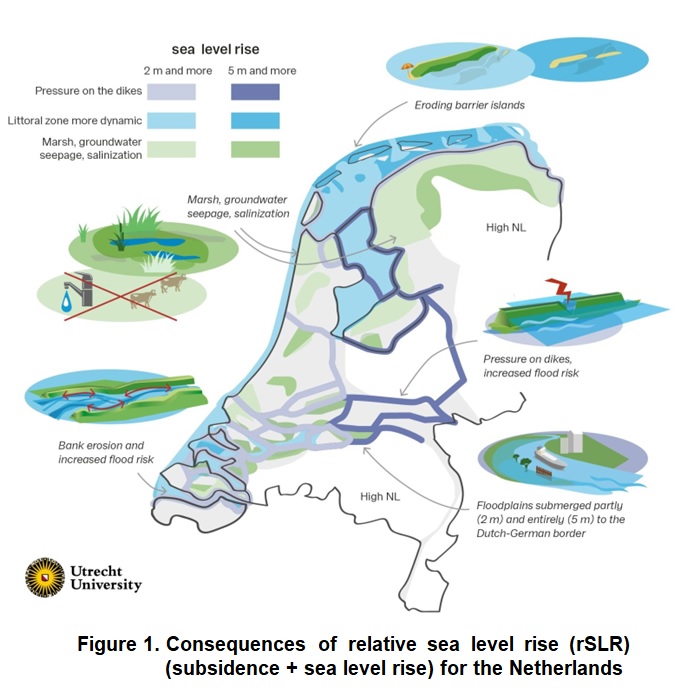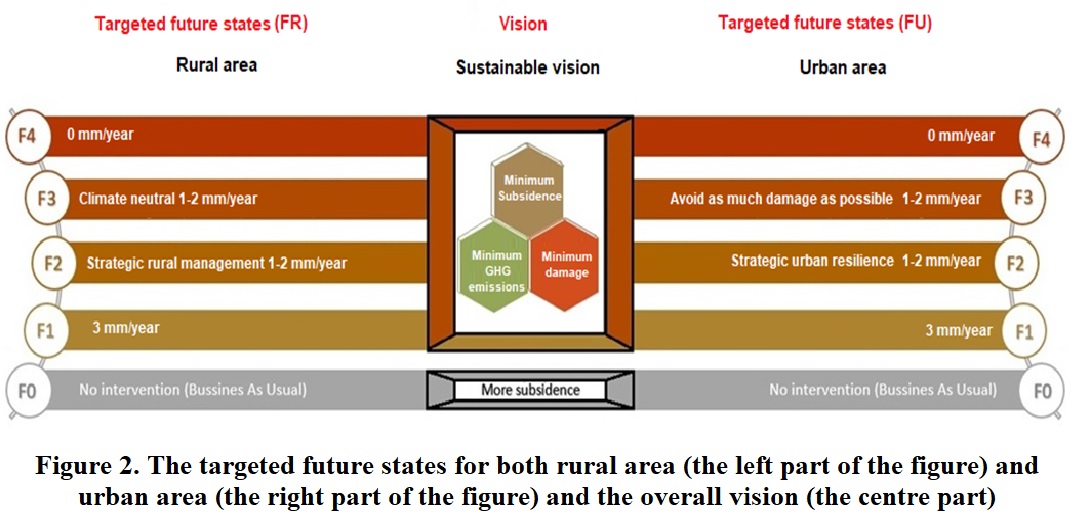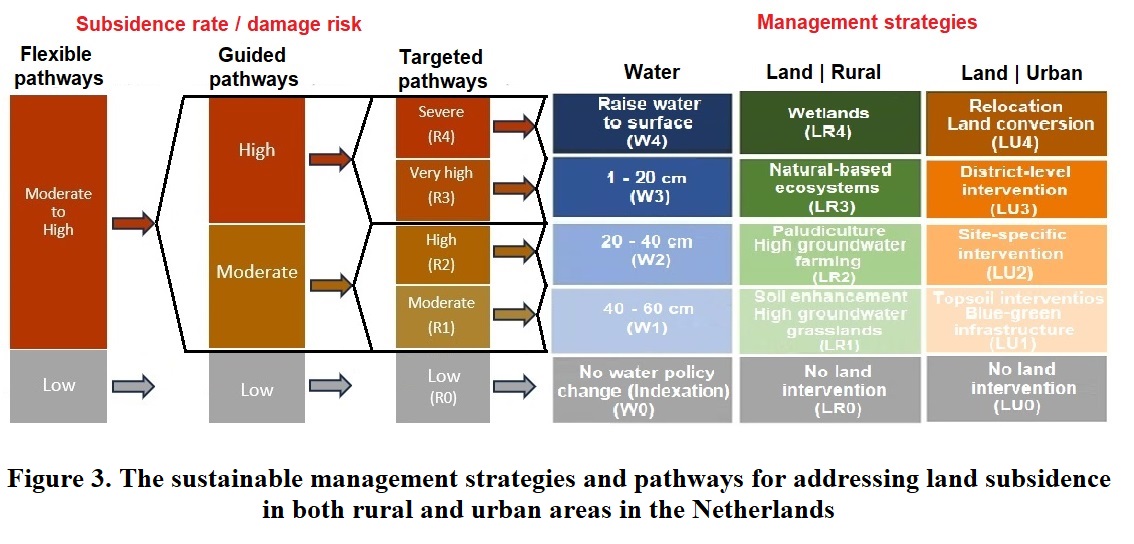WP5.1 – Scenario Development Using a Backcasting Approach to Sustainably Address Land Subsidence in the Netherlands
Land subsidence in delta regions can lead to various problems, including damage to buildings and infrastructure, increased flood risk, and salinization of freshwater resources, particularly when considering the impacts of accelerated climate change and sea level rise (SLR, see figure 1).

A backcasting approach generally involves establishing a vision and a set of preferred future states, and then working backwards from those desired future states to identify the steps needed to reach those futures and achieve the broader vision. This approach aims to help determine potential strategies and policy actions in the present that can facilitate achieving the targeted future states and consequently the envisioned outcome.
For land subsidence, scenario development using a backcasting approach can be a valuable tool, as it allows for the exploration of a range of possible future outcomes under different management strategies, examined across a range of plausible socio-economic and climatic circumstances.
This subproject will develop a set of land and water management strategies and scenarios using a backcasting approach to sustainably address land subsidence across the Netherlands. The scenarios will be developed based on a subsidence-related damage risk map using a set of intervention measures (from WP4) and management strategies for both urban and rural areas, and a set of targeted future states established by both scientists and stakeholders within the Living on Soft Soils (NWA-LOSS) research programme.
All developed scenarios, management strategies, and targeted futures aim to either limit or completely halt land subsidence, while also considering the need to minimize subsidence-related infrastructure damage and greenhouse gas (GHG) emissions across susceptible areas in the Netherlands, all within a sustainable vision.
Method of the research: The backcasting approach
This subproject will adopt a backcasting approach to develop scenarios for sustainably addressing land subsidence across the Netherlands. The process involves collaboration between scientists and stakeholders to define a vision and targeted future outcomes. Tailored management strategies will then be developed to address different levels of subsidence-related damage risk. Consequently, subsidence damage risk assessment and mapping is a crucial step, as the resulting risk assessment will provide the foundation to connect specific local contexts with relevant urban and rural intervention measures aimed at achieving the targeted future states established within the LOSS project (see figure 2).

Multiple scenarios and pathways will be developed and designed based on the implementation approaches of the previously developed management strategies (see figure 3).

All scenarios and management strategies developed within this subproject will be systematically evaluated and assessed based on key criteria, including effectiveness, economic value, and environmental impact. Additionally, the preferences of relevant stakeholders regarding the most socially acceptable measures that can effectively and sustainably address land subsidence in each specific local context in the Netherlands will be considered. The assessment process will mainly consider these three key factors:
1- The effectiveness analysis of land subsidence mitigation measures. This assessment can be done based on the outputs of the Atlantis model, the predictive 3D subsidence model (from WP3.1), which can provide the predicted future subsidence values resulting from the implementation of each scenario and corresponding management strategy.
2- The socio-economic damage assessment by analysing the total economic value, including water management costs, carbon credits, and net revenue from agricultural practices in rural areas. For urban areas, the analysis focuses on building and infrastructure maintenance costs. This socio-economic damage assessment can be conducted based on the outputs of the Social Cost & Benefit Analysis (SCBA) (from WP3.3).
3- The environmental and social impact assessment by analysing the GHG emissions resulting from implementing each management strategy and corresponding measures, which can be obtained from the Atlantis or SOMERS models (from WP3.1).
The outcomes of this backcasting approach and the assessment process will provide decision-makers with the necessary information on a national scale to make well-informed choices and decisions to address land subsidence in a sustainable manner across the Netherlands.

